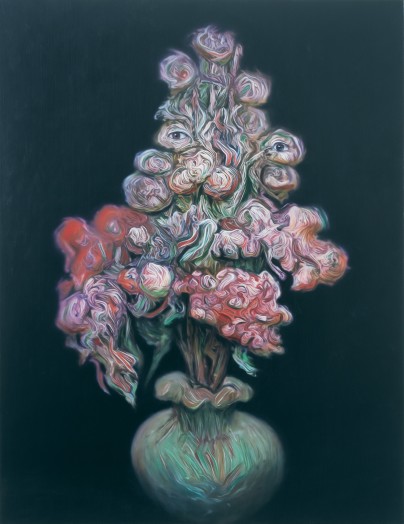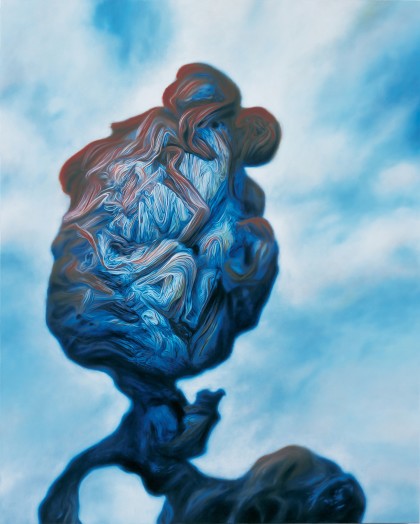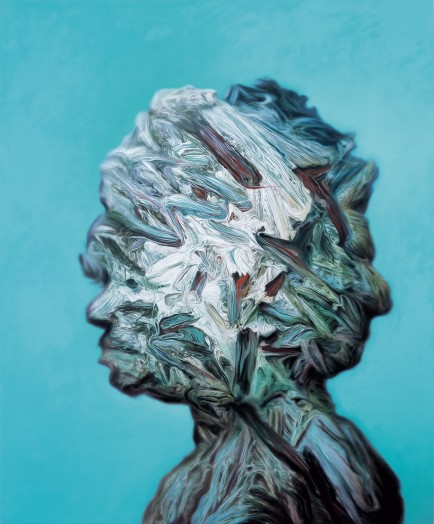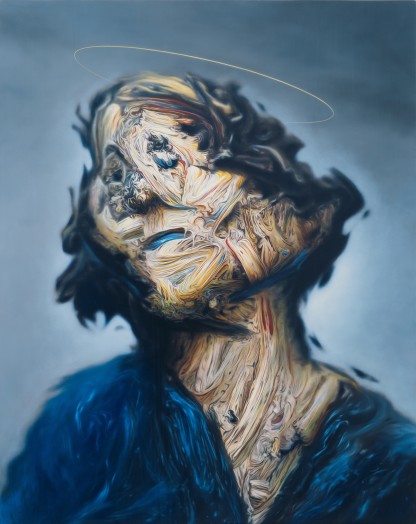Glenn Brown: Patrick Painter, Los Angeles
Patrick Painter Inc. proudly presents new paintings by Glenn Brown.
Along with two themes particular to Glenn Brown: re-presented ultra-thin brush marks, and the history of painting from the 17th century to the present, portraiture is at the heart of this exhibition – even though one painting seems to represent a vase of flowers, another a foot, another a dog, or merely an assortment of brush marks, etc.
Early Modernists remain the role models, if not the subjects. Continuity is emphasized – Rembrandt, Van Gogh, Baselitz and Auerbach return in different forms. In Joseph Beuys, Brown uses a painting that he first painted in 1996 – Rembrandt’s son by a Rembrandt student. Combined with a Gabriele Münter from 1909, the result is a painting that – like his vision – is very much the artist’s own. For him the “green lines of paint representing the skin describe, like the other works, a sad world made of paint.”
The color in this paint world is never naturalistic – inspiration was sought in Cezanne, Picasso, and Renoir, with some influence from Leonardo Da Vinci for good measure, while the greens were originally taken from two reproductions of Luc Tuymans paintings. Developed further using thin glazes of different paints, the greens might be said to enjoy dominance here. “If so,” Brown says that is perhaps because they “best represent putrefaction,” decay in the absence of oxygen – morbidity and the presence of death are also important Brown themes. The upside-down foot with head-like tendencies in It’s a Curse It’s a Burden and the formally posed dog with human aspirations in Anaesthesia are predominantly putrid-meat green. “It seems fitting,” he notes, as “both models come from the pages of books, and both now inhabit a world without air, sun, or much hope of seeing the real world again.”
Brown works from photographs and printed reproductions, recreating their flat, homogeneous surfaces, smooth and glassy. His brush marks are so well disguised the paintings can seem airbrushed. On top of that, to the inaccuracies and distortions that reproductions may possess he introduces his own meticulous deformations. The paintings are thus not only sheer, but also complex, emotional, ranged, and often blackly humorous. Among other things, they explore questions of authorship and authenticity, blur boundaries between that considered real and unreal, and challenge the objective fixity of subjective identities and types. They are objects to project upon, complex, and ungovernable.
In I do not feel embarrassed at attempting to express sadness and loneliness and Life Without Comedy respectively, a very late Van Gogh still life is represented as a head. In neither is the head obvious or perfectly formed. In fact, in Life Without Comedy, there is purposefully no nose or mouth, only two expressionless eyes stuck between animal and vegetable life.
A reception for the artist will be held Saturday, October 20th, 2001, 6 – 8 pm.
Artworks
-
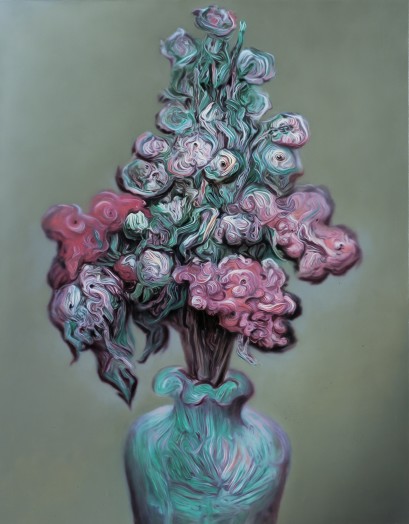 Glenn BrownI Do Not Feel Embarrassed at Attempting to Express Sadness and Loneliness, 2001Oil on panel61.28 x 47.94cm
Glenn BrownI Do Not Feel Embarrassed at Attempting to Express Sadness and Loneliness, 2001Oil on panel61.28 x 47.94cm -
 Glenn BrownIt’s a Curse It’s a Burden, 2001Oil on panel105 x 75cm
Glenn BrownIt’s a Curse It’s a Burden, 2001Oil on panel105 x 75cm -
 Glenn BrownThe Suicide of Guy Debord, 2001Oil on panel62.5 x 46cm
Glenn BrownThe Suicide of Guy Debord, 2001Oil on panel62.5 x 46cm -
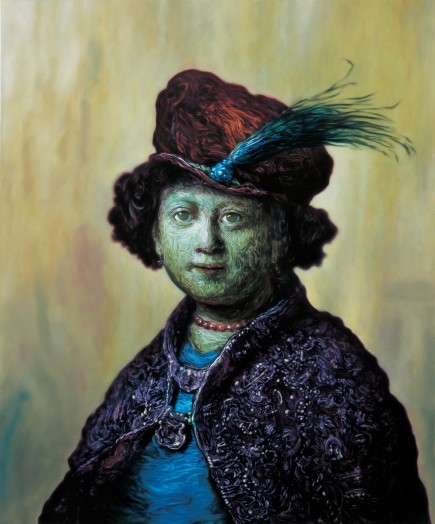 Glenn BrownJoseph Beuys, 2001Oil on panel96 x 79.5cm
Glenn BrownJoseph Beuys, 2001Oil on panel96 x 79.5cm

